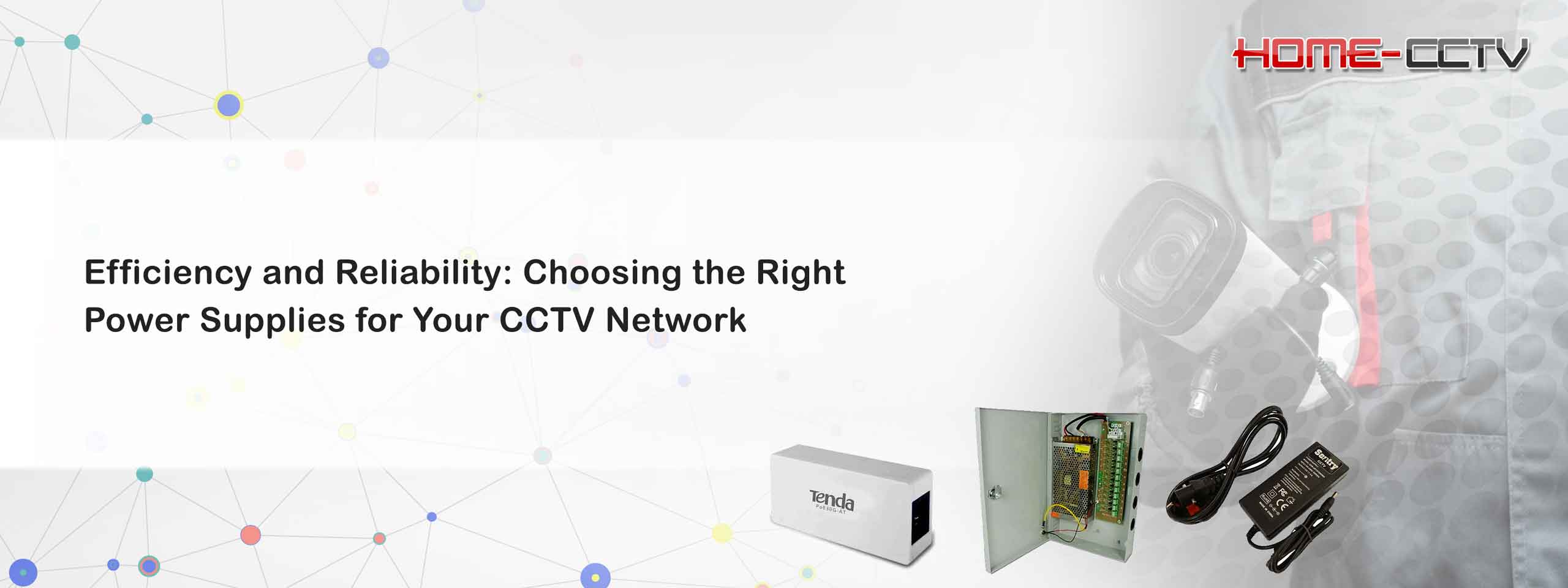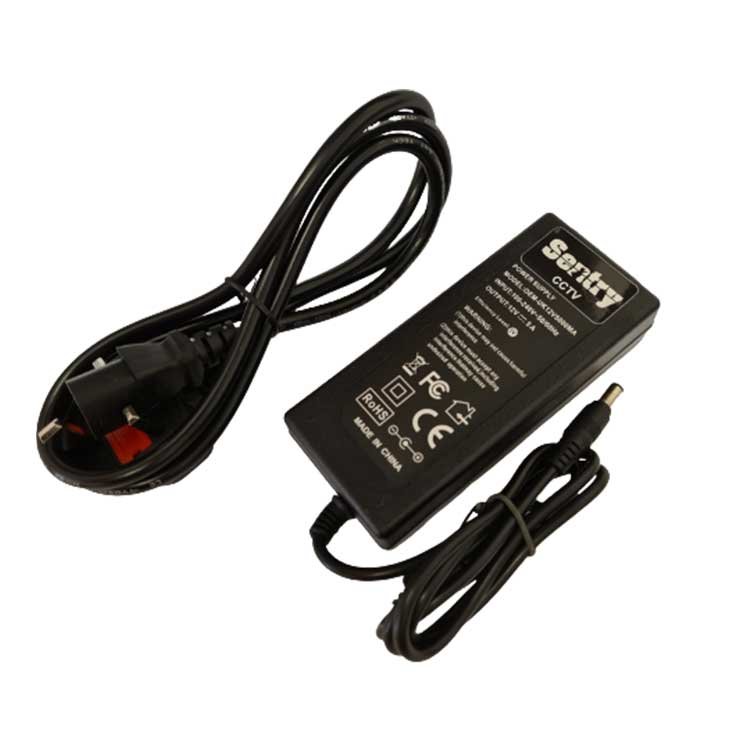Closed-Circuit Television (CCTV) systems have become indispensable tools for surveillance and security across various sectors, including residential, commercial, and governmental. However, the effectiveness of any CCTV network heavily relies on the reliability and efficiency of its power supply. In this comprehensive guide, we look into the crucial aspects of selecting the right power supplies for your CCTV infrastructure to ensure uninterrupted operation and optimal performance.
Understanding the Importance of CCTV Camera Power Supplies:
Power supplies serve as the lifeblood, providing the necessary energy to CCTV cameras, recorders, and other components. Any shortcomings in power provision can lead to system failures, compromising security and surveillance efforts. Therefore, prioritizing the selection of appropriate power supplies is paramount for maintaining the integrity and functionality of the entire CCTV system.
Overview of various types of power supplies used in CCTV systems:
Generally there are two kinds of CCTV Security Camera Power Supplies: centralized and decentralized.
- Centralized ones are for big CCTV setups with lots of cameras. They give power to all the cameras from one main spot.
- Decentralized ones are for smaller setups with just a few cameras. They go near the cameras and give power straight to each one.
Some of the main used power supplies are:
- Plug-in Adapters: These are small, compact power supplies that plug directly into a power outlet. They often come with multiple outputs to power several cameras simultaneously. See our Sentry 12v 5A Power supply PSU transformer for CCTV Camera
- Multi-Camera Power Supply Boxes / Cabinet: Also known as power distribution boxes, these units are designed to provide power to multiple cameras from a central location. They are commonly used in larger installations where many cameras are spread across a wide area. Find out more about 18 way 20 amp CCTV distributed Power supply cabinet
- PoE (Power over Ethernet) Switches: PoE switches deliver power and data to network-connected devices, including CCTV cameras, through Ethernet cables. They simplify installation by combining power and data transmission over a single cable, reducing the need for separate power supplies. Here is a PoE Switch Tenda IEEE802.3at Gigabit PoE Injector
Factors to Consider When Choosing Power Supplies:
- Voltage and Current Requirements:
Each CCTV component has unique voltage and current requirements. Understanding these specifications is fundamental to selecting compatible power supplies. Voltage requirements typically range from 12V DC to 24V AC, while current ratings vary based on the power consumption of cameras, recorders, and peripherals. - Power Supply Type:
CCTV systems commonly utilize either linear or switch-mode power supplies. Linear power supplies offer simplicity and reliability but may dissipate more heat and be less energy-efficient compared to switch-mode counterparts. Switch-mode power supplies, on the other hand, are more compact, energy-efficient, and generate less heat, making them suitable for larger installations or where space is limited. - Redundancy and Backup:
To enhance system reliability, consider implementing redundancy and backup solutions for power supplies. Redundant power sources ensure continuous operation even in the event of a primary power supply failure, minimizing downtime and safeguarding critical surveillance operations. - Environmental Considerations:
CCTV systems deployed in outdoor or harsh environments necessitate power supplies designed to withstand varying weather conditions, temperature extremes, and potential exposure to dust, moisture, or corrosive elements. Selecting weatherproof or ruggedized power supplies ensures long-term reliability and durability in challenging settings. - Remote Monitoring and Management:
Incorporating power supplies with remote monitoring and management capabilities enables proactive surveillance of power status, voltage fluctuations, and potential issues. Remote access facilitates real-time diagnostics, troubleshooting, and maintenance, thereby optimizing system uptime and performance. - Compliance and Certification:
Prioritize power supplies that adhere to industry standards and certifications, such as UL (Underwriters Laboratories) or CE (Conformité Européenne), ensuring compliance with safety and quality regulations. Certified power supplies undergo rigorous testing and validation, instilling confidence in their reliability and suitability for CCTV applications.
Calculating Power Requirements for a 8-Channel Camera CCTV System
To work out how much power a CCTV system needs, we look at two main things:
- Power Consumption per Camera: Check the specifications of each camera to find out its power consumption. This is usually measured in watts (W) or milliamps (mA) at a specific voltage. Determine the voltage required by the cameras. Common voltages for CCTV systems are 12V DC or 24V AC.
- Number of Cameras: How many cameras there are in total.
Let’s say, for example, that each camera needs 12 volts (V) of DC power and uses 500 milliamps (mA), which is the same as 0.5 amps (A), of current.
Here’s how you’d figure out the power needed:
First, work out the power needed for one camera. To do this, you multiply the voltage (V) by the current (I). So, for our example, it would be: P = 12V x 0.5A = 6 watts.
Then, you multiply the power needed for one camera by the total number of cameras in your system to find the total power needed.
For instance, if you have 16 cameras, it would be: Total Power = 16 (cameras) x 6W (per camera) = 96W (watts).
So, for this setup, you’d need a power supply or multiple power supplies that can provide at least 96 watts of power for your 16-camera CCTV system.
Difference between AC & DC Power Supplies in CCTV Power Supply:
AC Power Supplies: AC power is good for sending electricity over long distances without losing much power. This makes it great for big setups where cameras are far apart, often seen in shops and factories.
DC Power Supplies: DC power is usually used for smaller setups in one area. It’s popular because it’s simple and works well with many CCTV cameras, especially in homes or small businesses. Most CCTV cameras are designed to operate using DC power, typically ranging from 12V to 24V.
What to Avoid When Setting up Power Supply?
When you’re hooking up security cameras to a power source, it’s important not to connect cameras that are far away to the same power supply as cameras that are close by. If they share the same power source, the high voltage needed for long-distance cameras could damage the ones nearby, while a low voltage supply would cause the distant cameras to malfunction. It’s best to connect all nearby cameras to one power source and give the distant cameras their own separate power supply.
In a CCTV system, power supplies are crucial. They give the cameras the energy they need to work well and shield them from power problems like surges or outages. When picking a power supply, think about how many cameras you have, what power they need, and how far they are from the power source. The right power supply keeps your CCTV system running smoothly, providing the security and surveillance you rely on. For more about CCTV power supplies, check out https://home-cctv.com/power/
Please contact us for any of your query and information needed. Thanks!






